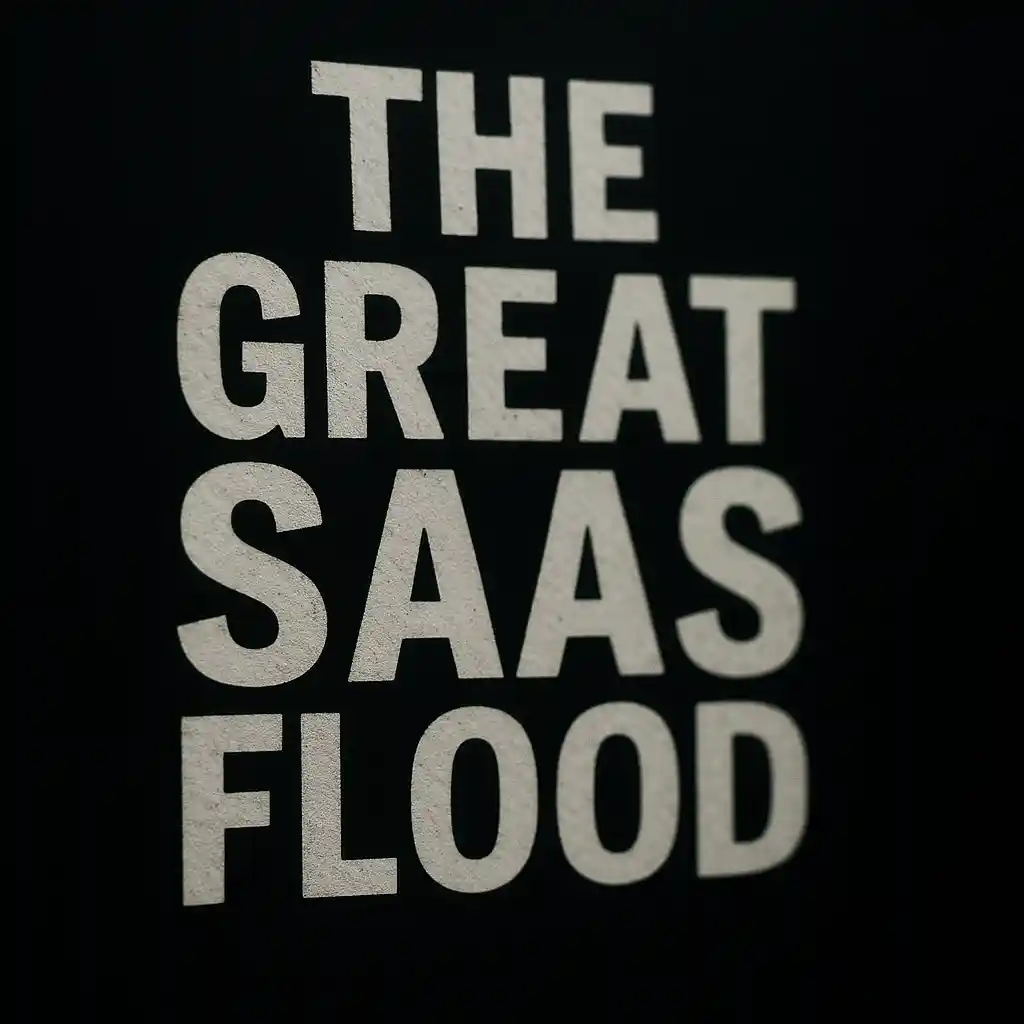
The Great (AI) SaaS Flood: When AI Makes Building Easy, Only the Big Incumbent Players Win
The Great (AI) SaaS Flood: When AI Makes Building Easy, Only the Big Incumbent Players Win

The software world is drowning. Thanks to a new wave of agentic AI coding tools like Cursor, GPT-5 Codex, and Claude Code—paired with frontier models such as GPT-5 High and Claude Opus 4.1—the cost of building software has all but disappeared. You can spin up a solid SaaS app in a weekend for pocket change. That sounds exciting until you realize what it really means: markets are flooded with look-alike products, and the only companies standing tall are the ones already at the top.
Startups chasing “an unsolved pain” or betting on “winning with AI agents” are chasing shadows. Why? Because incumbents can tack on the same AI features overnight and distribute them to their massive customer bases. Venture capitalists haven’t fully caught up, though, and they’re still writing checks for SaaS businesses that look more like clones than challengers. The harsh truth is simple: if you’re not already leading your category, the climb to the top is essentially blocked.
Building Got Cheap, and the Market Flooded
Once upon a time, building even a basic product meant months of work and a full team. Now a single person can ship something credible in a few days. Entire feature sets that used to demand a small army are just prompts away. When building becomes this easy, the real bottleneck shifts to distribution—and distribution heavily favors the players who already own attention, trust, and contracts.
“Find an Unsolved Pain” Rarely Works
Most common business headaches already have a polished solution, and usually a market leader too. On the rare occasion a greenfield opportunity appears, it doesn’t stay green for long. By Monday, you’ll see ten AI-powered clones crowding the same space. Any edge in user experience or workflow evaporates almost instantly.
Betting on AI Agents? Don’t Count on It
You might think wiring up agents gives you an advantage. It doesn’t. If you can do it, the incumbent can too—and they’re better positioned because they already have the things that matter most: existing customer relationships, deep integrations, historical data, and that killer advantage of being the default choice. They can roll out agents in a sprint and bundle them seamlessly into their existing contracts.
The Real Moats Have Moved
In today’s stack, the only lasting advantages come from distribution, proprietary data, switching costs, and brand. Building speed is no longer a moat—it’s table stakes. Customers don’t care if your workflow is slightly smarter. They care about pricing, packaging, and whether you’re embedded in the systems they already use.
Venture Capital Is Still Playing Catch-Up
Money is still flowing into SaaS, but too much of it is chasing yesterday’s playbook: smart team, slick UX, fast shipping. That formula made sense when development costs were high. It doesn’t anymore. Today the power law has sharpened. Capital piles into market leaders or industries with regulatory and infrastructure hurdles that block copycats. Everything else either gets folded into someone else’s bundle or remains a fleeting indie project with no real moat.
What Actually Works (and It’s a Short List)
To succeed now, you need one of three things:
- A wedge that gives you distribution on day one, like plugging into a dominant workflow or building for a captive audience.
- Proprietary data that competitors can’t replicate, giving your models a unique edge.
- A niche incumbents can’t touch—regulated or mission-critical markets where certifications, integrations, or service layers create barriers.
Otherwise, you’re just a feature waiting to be bundled into someone else’s suite.
The Hard Truth
Creation is cheap, imitation is cheaper, and distribution is everything. The golden age of “easy SaaS” is over. If you’re not already the obvious leader in your space, assume the path to leadership has closed. Your best moves now are to merge, carve out a defensible micro-market, pivot into data or infrastructure, or build products that serve incumbents rather than try to topple them.
In this new era, the scarce resource isn’t code—it’s trust, contracts, and data gravity. Agentic AI didn’t just accelerate software development. It obliterated most of the reasons for a brand-new SaaS to exist.